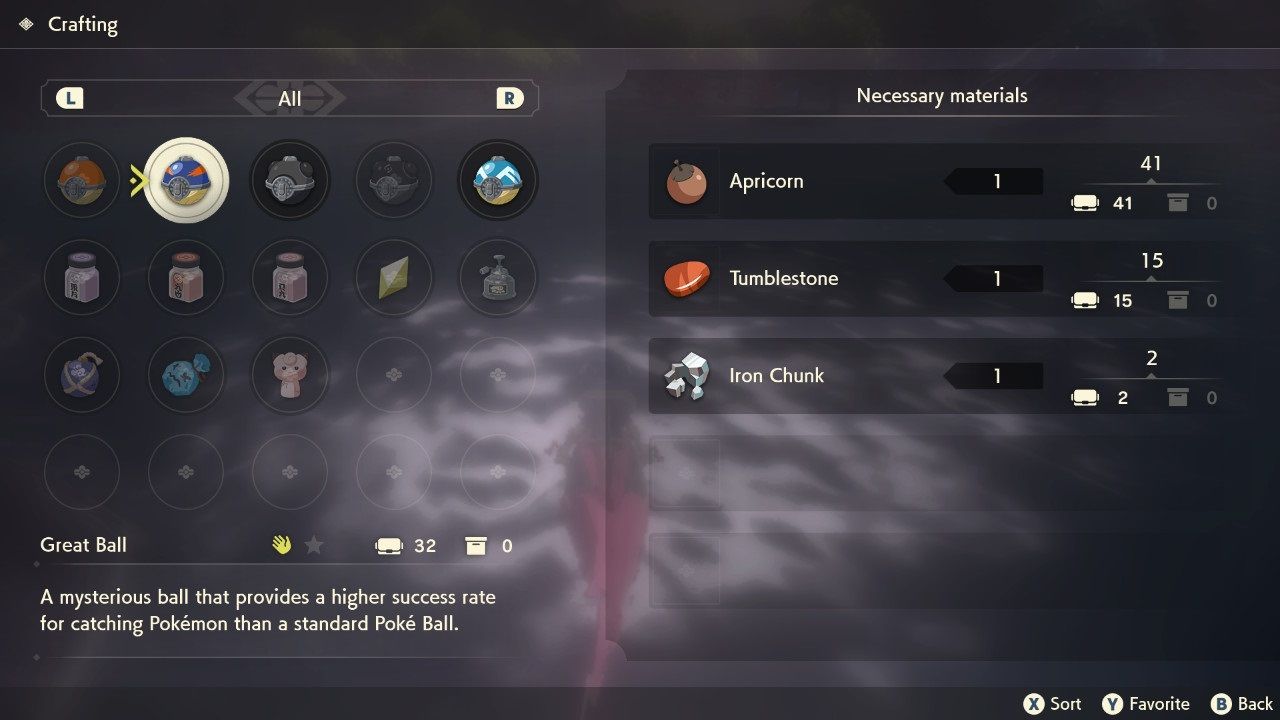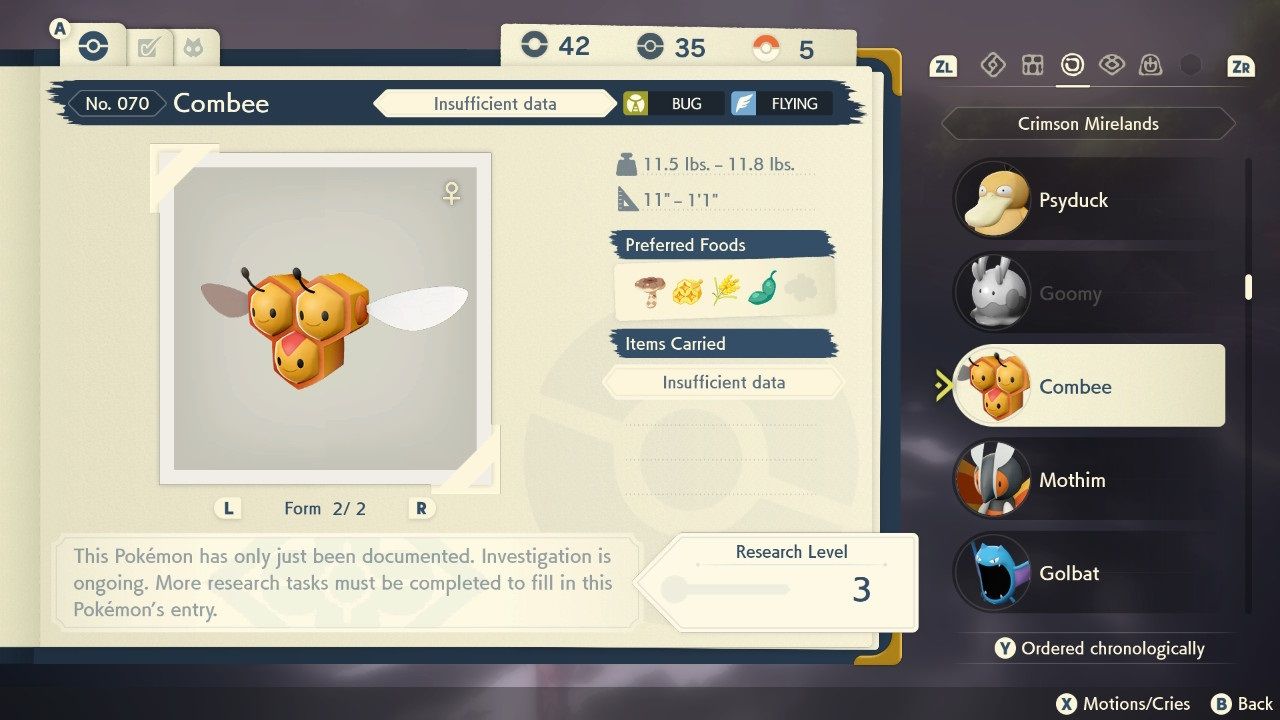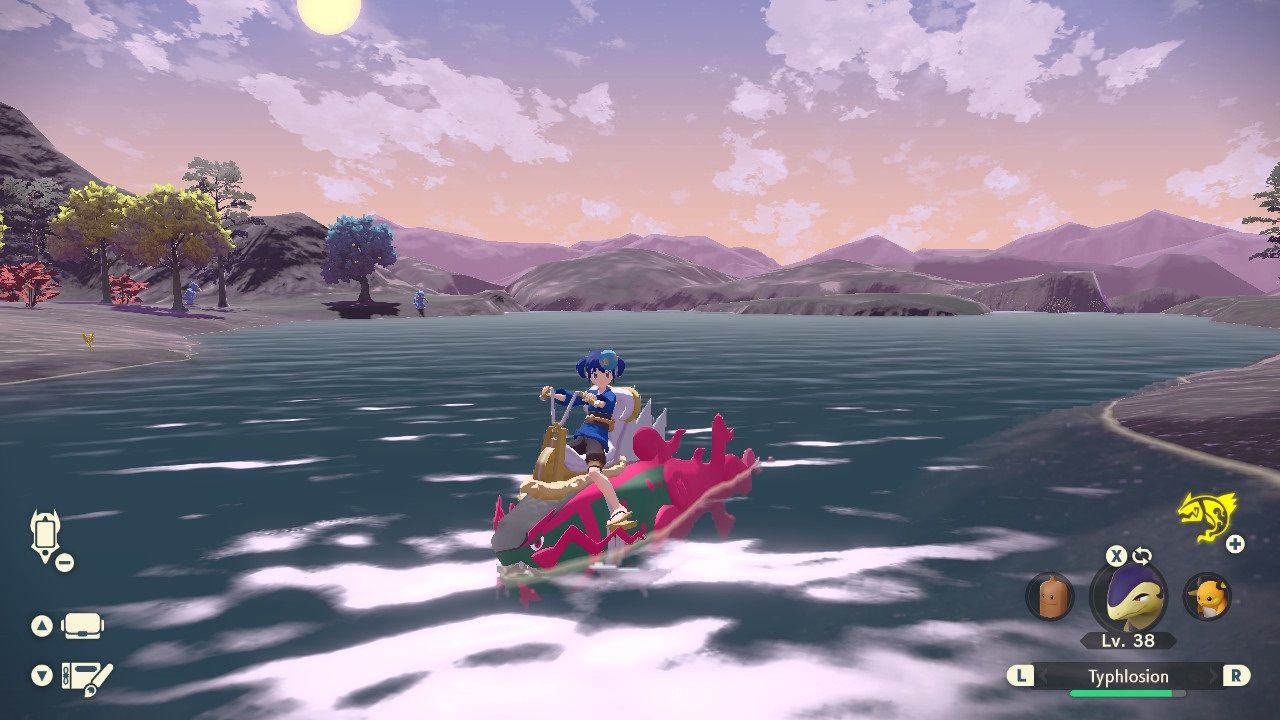Despite its flaws, Pokemon Legends: Arceus is a refreshing change of pace for the series. As much as I love Pokemon, I’ve found it difficult to stay enamoured with the last few titles and tire of them far sooner than I’d like to admit. Part of why I love the new recipe that Legends: Arceus has cooked up is because it borrows more than a few ingredients from another favourite series of mine — Monster Hunter Stories.
There are so many similarities between the two, and I mean aside from the obvious comparison of you traipsing around the world battling and raising monsters. Both games may fall into the same critter-collecting category but they’ve always had their own flair and formula. Until now, that is. You could argue that MHS was influenced by Pokemon, so it’s nice to think that the games have come full circle now with Pokemon taking some cues from it in return.
With Legends: Arceus sending players into the Poke-past, Game Freak had the perfect excuse to shake things up. No longer can you just purchase all of the items you need, after all, PokeMarts don’t exist yet in this timeline. Everything from Poke Balls to Revives has to be crafted, so you need to go out in the field to gather materials and then glue that stuff together yourself.
Though you don’t need balls for catching monsters in MHS, you still need plenty of items, such as traps, potions, and more, all of which you need to craft. This focus on having to forage for yourself rather than just ensuring you have enough money to buy what you need adds an extra layer of difficulty and interest.
In previous Pokemon games, catching a Pokemon would be enough to complete the corresponding Pokedex entry, but that’s no longer the case. Now you have to complete a series of Research Tasks to unlock all of a Pokemon’s information, carried items, and preferred food. It’s all too easy to see the correlation between this and filling the Monstiepedia in MHS, where you fight monsters multiple times and have to attack them with different types of weapons to learn about all their weaknesses and item drops.
For completionists, this encourages you to repeat the same battles over and over or to return to areas you’ve already thoroughly rinsed. Yet strangely enough, this doesn’t make it more tiresome, it makes it all the more interesting and adds a deeper sense of accomplishment than just catching one of each Pokemon could ever do.
Legends: Arceus has a heavier focus on side quests now in the form of Requests, and while MHS was far from the first game to utilise optional quests, the way in which this is done does seem to echo MHS a lot. NPCs ask for a range of favours, such as requesting certain items or particular Pokemon and completing these little missions rewards you with items, new recipes, or expanded features.
As you progress through Legends: Arceus, you unlock a range of rideable Pokemon with special abilities, such as flying, climbing, swimming, digging, and more. This is exactly like the different kinds of monsters in MHS that allow you to do the same, opening up new areas by flying and swimming, and even giving you another reason to head back to earlier areas to explore places you couldn’t reach before. The only real difference with Legends: Arceus is that you can’t pick and choose which Pokemon you ride; they’re the same five ‘mon for every player. It would have been so much nicer to be able to choose which flying Pokemon you soared the skies with or surfed around on, but maybe that’s something we can look forward to in a potential Legends sequel. That happened in Let’s Go, too, so why not continue that precedent, Pokemon?
In addition to the Jubilife Village hub area, Legends: Arceus features five explorable locales that offer different environments, each with their own native Pokemon roaming the wilderness that aren’t necessarily found elsewhere. There are also different gatherable resources to discover in each area, with some items more commonplace in specific maps. Finally, each area has its own set fast-travel point camps and offers up additional requests from local NPCs. It’s very similar to the way that MHS is segmented, though I’d be lying if I said that it pulled it off to the same degree.
MHS has a village hub per area, which I think would have worked nicely in Pokemon too. While Legends: Arceus has camps scattered around that give you access to important features, such as managing your Pokemon and accessing storage, a hub per area could have added to the storyline a bit, spread out the requests a little more, and also served as an anchor point for the different wardens you encounter throughout the story — much like the battle buddy characters tied to each area in MHS.
One of Legends: Arceus’ biggest failings is that once you set out into an area, you can only fast travel around the camps in that specific location. To be able to travel to another area, you have to first return to Jubilife Village and then choose to venture out once more. It would have been far better if the fast travel options in the menu encompassed every area, rather than just the one you’re in — more like the style of MHS.
I’d love to see Pokemon flesh out the concepts showcased in Legends: Arceus even further and borrow more from MHS. One thing, in particular, that would lend itself well to a future Legends game would be maps that feature off-shooting caves and sub-areas that are randomly generated. This would make gameplay even more varied and make finding and catching coveted Pokemon even more challenging if they only appear in randomly spawned locations.
Perhaps even going so far as having monsters run away and spawn dens could work, but I wouldn’t go so far to say that I’d want to have to search for shinies in Super Rare dens. Shiny hunting can be painful enough already. Legends: Arceus introduces so many new mechanics to the series, both new and lifted from MHS, that it’s hard not to be excited about the possible future of Pokemon. In short, I’d be happy to buy a Legends game of every Pokemon region.
Source: Read Full Article


